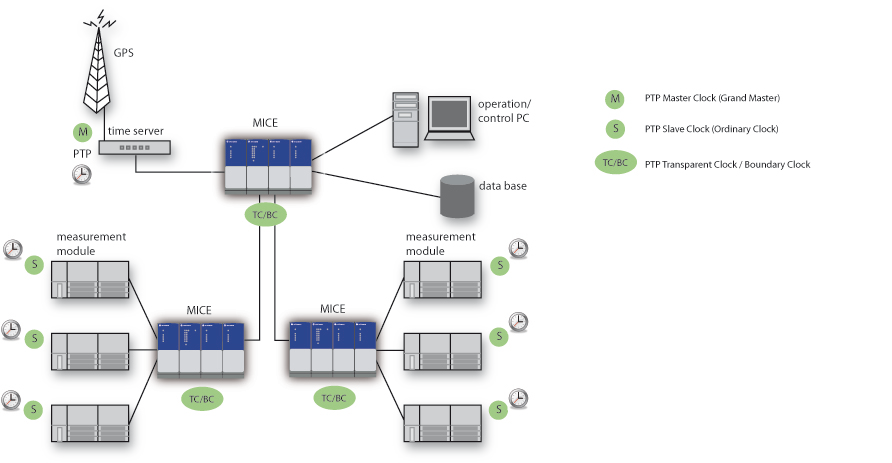Precision Time Protocol
Time synchronization with the Precision Time Protocol
Precise time information is especially important for decentralized systems. Using the Precision Time Protocol (PTP) specified in IEEE 1588, it is possible for the first time to synchronize clocks that are distributed over Ethernet networks within an accuracy of less than one microsecond.
PTP is always in demand in automation technology when procedures require precise synchronization.

The field of Motion Control is an important area of application. PTP helps to synchronize drives inside a robot, for example, or a printing press, a packaging or paper processing machine. Cooperating robots are linked to each other through extremely precise clocks, or entire parts for machines or installations are closely connected over PTP so that the on-going processes are coordinated exactly with each other chronologically. Clocks running synchronously in each component make it possible to create decentralized structures and decouple completion of the processes from the communication and processing of control commands.
Many companies outside the field of automation technology are also working on the evaluation and implementation of PTP. In all cases where readings have to be collected and correlated, PTP is a much sought-after solution. Hirschmann is one of the pioneers in the field of clock synchronization over Ethernet. With the world’s first IEEE 1588 compliant Boundary Clock Switch, Hirschmann has been a part of many projects since 2004. Products that comply with the new and expanded IEEE Standard 1588-2008, which include support for the PTP Transparent Clock Function for Fast Ethernet and Gigabit Ethernet are also available immediately.
The applications of PTP at a glance:



